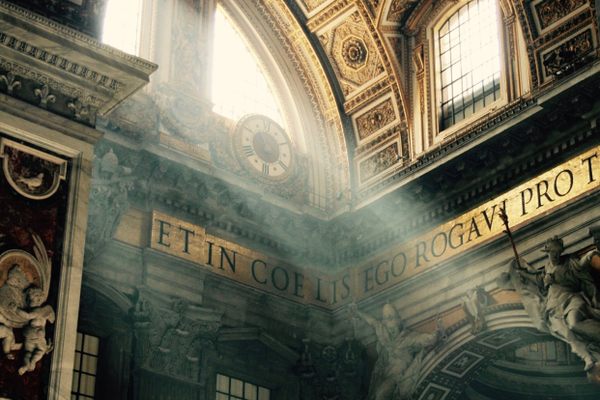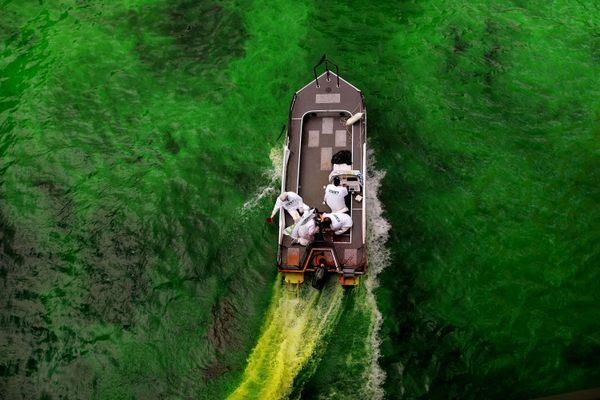That Time Portugal’s King Gifted an Elephant to the Pope
Hanno the elephant suffered much at the hands of power-hungry Europeans.
In early 1514, an eager audience gathered in the small central Italian town of Tarquinia, once a powerful Etruscan city. They stormed into the town’s local inn. Those unable to find room inside clambered onto the roof or perched atop neighboring buildings. They were all desperate to get a look at something special, something they had never seen before, desperate enough that the inn’s roof collapsed under their weight, and the “something special” was forced to spend the night in the piazza’s open air.
They were there to see Hanno, the elephant parading toward Rome—a gift for Pope Leo X.
Hanno’s arrival into Rome was met with massive crowds and a frenzy of attention. Fueled by human greed for prestige and entertainment, the journey came at the expense of Hanno’s well-being—a tale still too often the case with elephants today.
Hanno’s travels started in southwestern India, in the Portuguese-controlled city of Kochi—some 4,400 miles from Rome as the crow flies and much longer than that for Hanno.
Under King Manuel I, Portuguese traders and commanders brought all sorts of exotic flora and fauna back to Europe. Parrots, monkeys, rhinos, and large cats from South America, Africa, and Asia were ogled over at European courts. But of everything coming in, elephants “were the superstars. They were the ultimate gift a Western European ruler could hope for,” says historian Annemarie Jordan Gschwend, author of The Story of Süleyman: Celebrity Elephants and Other Exotica in Renaissance Portugal.

Hanno was likely born sometime around 1510 in Portuguese India. Since explorer Vasco da Gama’s arrival there in 1498, Portugal had steadily expanded their holdings, building a fort at Kochi, conquering Goa, and establishing more Southeast Asian footholds, such as at Malacca in modern-day Malaysia.
According to Silvio Bedini, author of The Pope’s Elephant, Indian handlers, known as mahouts, likely raised Hanno in captivity, training him to follow various commands. When Hanno was still very young, Portugal’s King Manuel I purchased the elephant as a gift for Pope Leo X.
In early 1511, Hanno, accompanied by his mahouts, was loaded onto a ship in the bustling port of Kochi, leaving his south Indian home forever. For about six months, Hanno withstood sun and rain on the ship’s open deck, traveling around the Cape of Good Hope and north to Lisbon. Rubbed with oil against the salt air and tethered to the mast during rough weather, Hanno was far from the comfort of his natural habitat and the solace of other elephants.
“When [young elephants] fear anything that happens in the external world,” says Sangita Iyer, author and founding executive director of Voices for Asian Elephants, “they go and hide beneath the mom so they feel protected.” Hanno would’ve had no such solace.
By early summer, Hanno finally arrived in Lisbon, but in 1514 he was off once again. The young elephant was shipped off with King Manuel’s vast array of gifts for Pope Leo. Manuscripts, pearls, precious stones, a Persian horse, parrots, a cheetah, and two leopards were all loaded up. Among raucous festivity, Hanno joined what was already aboard, and the ship left the harbor.

Everywhere the ship stopped, crowds flocked to see Hanno. In the Spanish city of Alicante, on the island of Ibiza, and in the Mallorcan port of Palma, those aboard could not keep curious spectators off the boat. Eventually, Nicolau de Faria, the royal equerry responsible for the elephant, was forced to avoid such stops altogether. After a bit of a scare from rough waters, they reached the tiny Tuscan town of Porto Ercole, where Faria had to commandeer a galley to bring Hanno to dry land.
Faria had wanted the party to rest, but that soon proved impossible when the townsfolk and farmers all came to witness Hanno’s arrival. They proceeded like a traveling carnival as spectators joined Hanno and the Portuguese envoy on the road south to Rome.
“Of course, he was traumatized,” says Iyer. All those people “add to the strain—the mental and physical and psychological strain—that this poor elephant had to put up with, which is devastating.” Even now, she says transporting the giants “is never easy on the elephant.”
More and more people followed Hanno and Faria on horseback and foot, all pressing in to see the elephant. The unwieldy caravan damaged land and property, further distressing Hanno.
The road was also hard, literally. Its tough surface abraded Hanno’s feet, and increasingly frequent stops were required for the elephant to recover. “The feet of the elephant are one of the most important parts of their body,” says Iyer. “Their legs are like four pillars. If the feet are worn out, it impacts the leg and then it impacts the body.” Foot rot, suffering, and physical collapse can follow.

As they wound their way toward Rome, Faria was bombarded with requests that the elephant visit this castle or that villa. He refused them all, though not for lack of time. They were actually running ahead of schedule, but Hanno needed to rest, not be pushed any extra distance.
They were running early enough for their planned entry into Rome that a stay was arranged at a cardinal’s villa outside the city, but excited crowds, clambering over walls and trampling vineyards, soon drove Hanno from that shelter. Not even the Swiss Guard, the pope’s bodyguards, kept the throng away from Hanno.
Despite all these difficulties, a four-year-old Hanno made a triumphant entry into Rome on March 19, 1514, bearing a silver castle-like structure on his back and delighting onlookers with salutes of his trunk.
Hanno swiftly became one of the pope’s favorite prizes. But the pope’s favor did little to benefit the poor elephant so far from home.
At least 13 Asian elephants were brought to Portugal in the 16th century, including Süleyman, who was given to Holy Roman Emperor Maximilian II. Far from being neglected, they were lavished with attention as symbols of a ruler’s prestige. “Manuel I delighted in his elephants and always did parades around the city with them and his mahouts to show off what kind of global ruler he had become,” says Gschwend. Elephants served as a “connection to the East and to the old ancient Roman and Greek culture.” They were symbols of “splendor, power, and globalism.” Rulers like Manuel I and Pope Leo X prized elephants, but Europeans and even Indian mahouts didn’t know how to care for the animals so far from home.

Hanno would only survive two years in Rome, despite the attention of the city’s very best physicians. After falling ill in early June of 1516, his urine was tested and his blood let before he was given a purgative containing gold. These were all common medical treatments for people, but they didn’t help Hanno. On June 8th, the young elephant died when he was only about six years old, well short of the 60-year lifespan of wild Asian elephants.
Knowledge of elephants has come a long way since Hanno’s time, but tragically that has not always led to improved care. Just like in the 16th century, human desire for entertainment and power is often placed before an elephant’s well-being. People “are still capturing elephants from the wild,” says Iyer, “tearing them from their families, despite the science available.”
“Nothing has changed, and that’s the sad part. Elephants are still considered a status symbol.” Now that they are no longer used in war or industry, she says, the question too often is, “How do you still exploit them?”
For Gschwend, Hanno’s sad tale holds a lesson. “The past can teach us to protect the present,” and Hanno’s story reminds us that “we need to preserve our planet and our animals.”










Follow us on Twitter to get the latest on the world's hidden wonders.
Like us on Facebook to get the latest on the world's hidden wonders.
Follow us on Twitter Like us on Facebook